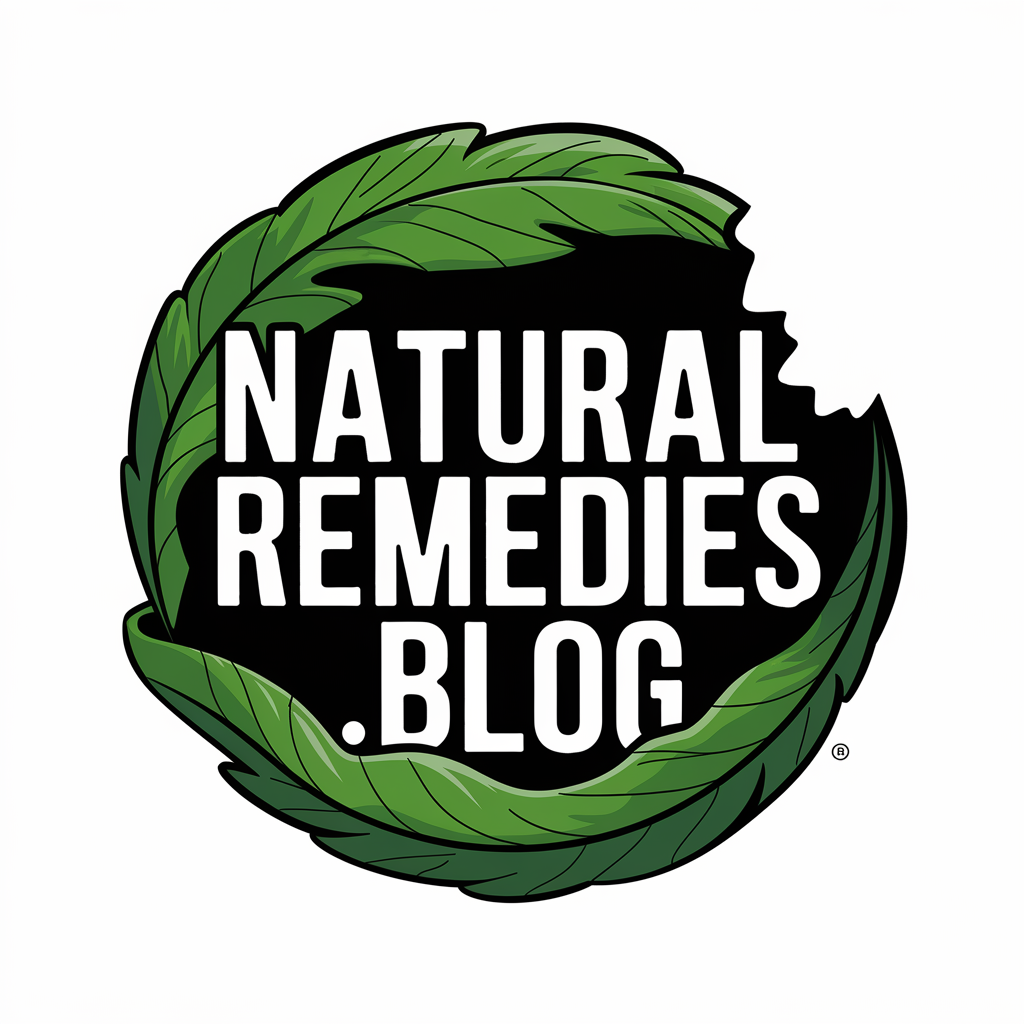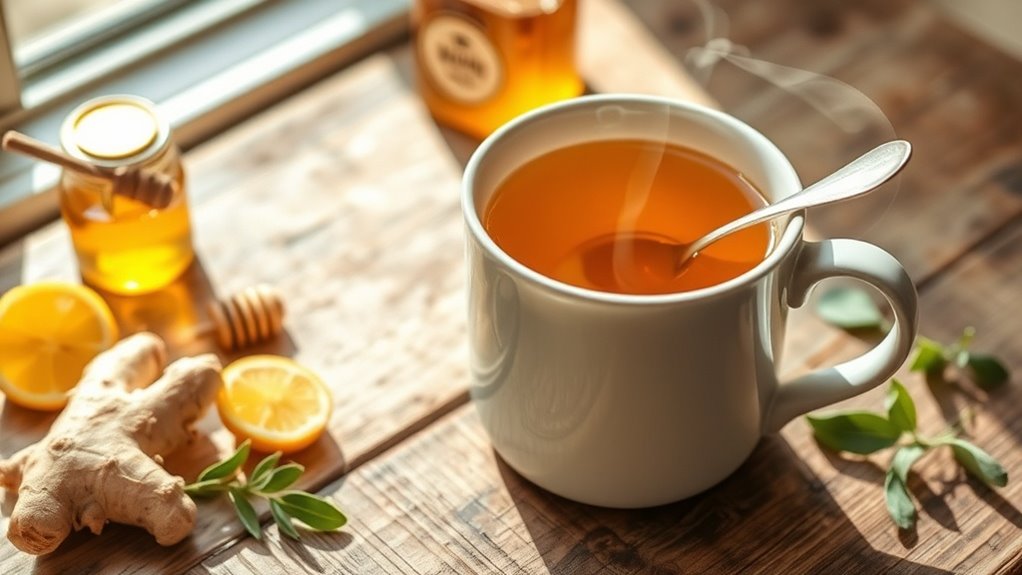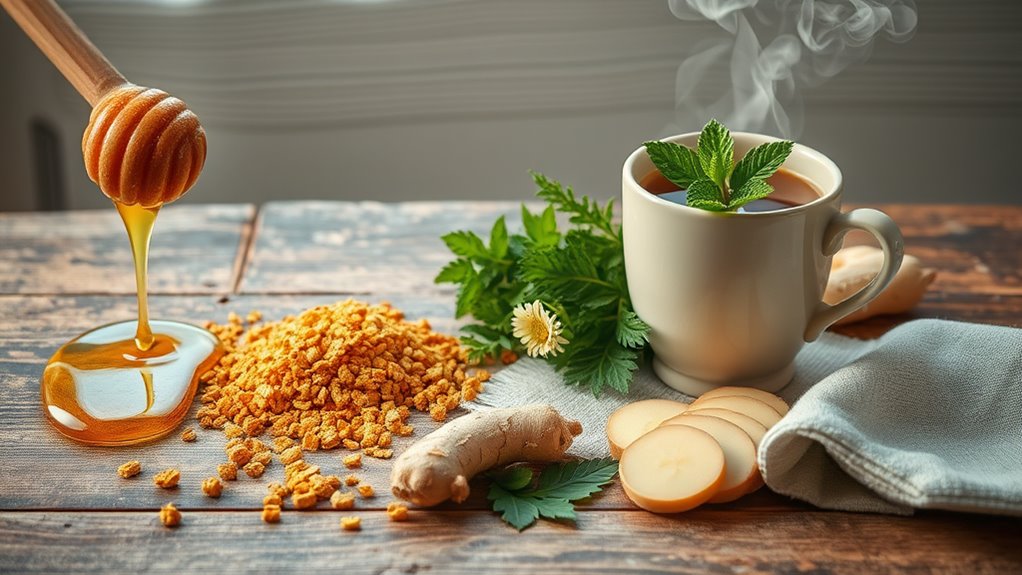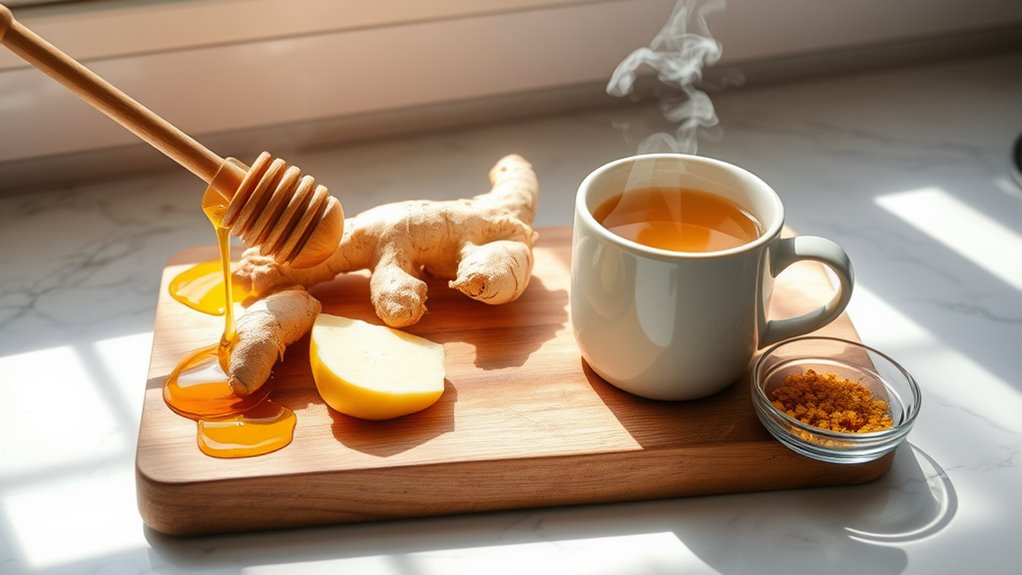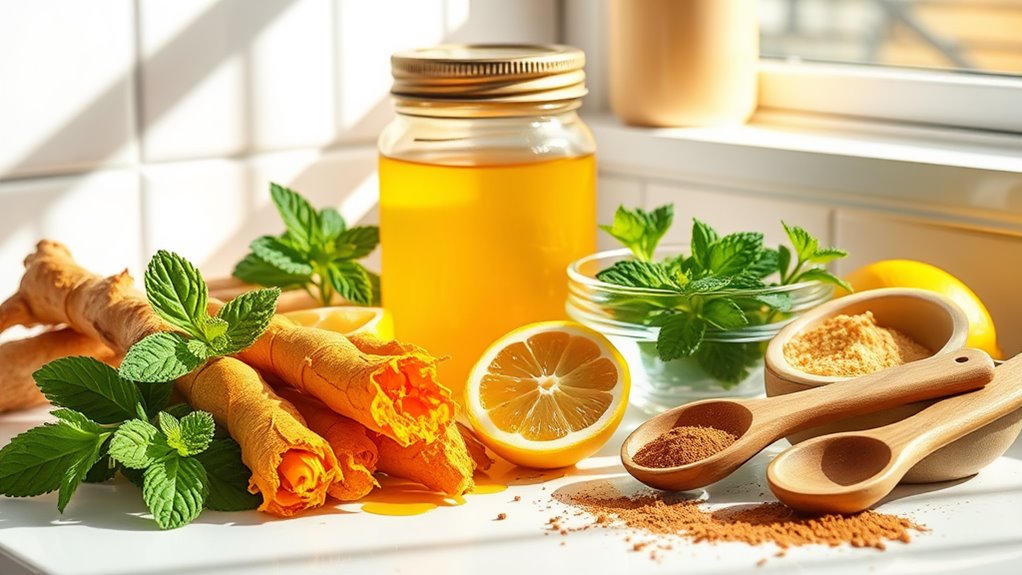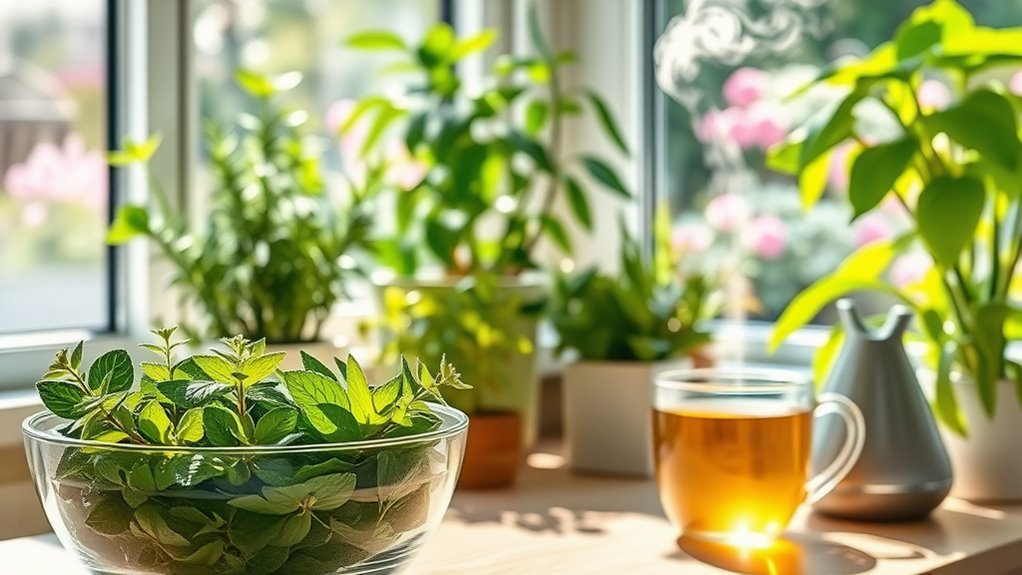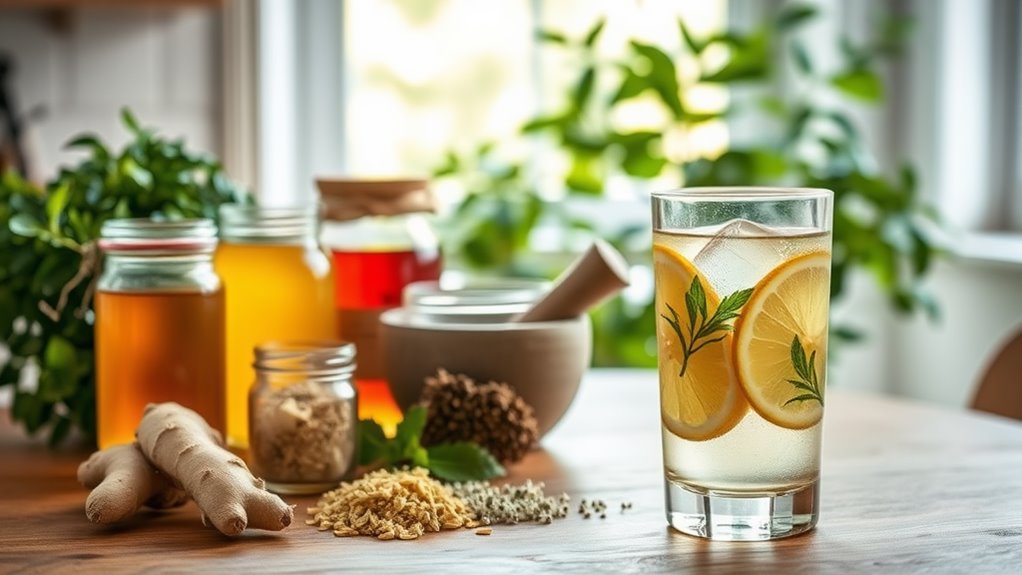Home Allergy Remedies to Stop Sneezing Fast
You can quickly stop allergy sneezing through several proven home remedies. Try steam inhalation with eucalyptus oil for 10-15 minutes to clear airways, or flush allergens with a neti pot using distilled water. Natural antihistamines like butterbur extract and stinging nettle leaf effectively reduce symptoms. Essential oils including peppermint and lavender can provide fast relief when properly diluted. Understanding your specific triggers will help you develop an even more effective treatment strategy.
Understanding What Triggers Your Allergies
Before seeking relief from allergies, you must first identify your specific triggers through careful observation and possibly allergy testing. Common triggers include pollen, pet dander, dust mites, mold spores, and certain foods.
Keep a detailed symptom diary noting when and where reactions occur. Track environmental conditions, foods consumed, and activities that precede symptoms. While home allergy remedies can provide relief, they’ll be most effective when you’ve pinpointed your exact triggers. Regular tracking local pollen counts can also help in scheduling outdoor activities to minimize exposure.
Consider consulting an allergist for skin prick tests or blood work to confirm suspected allergens, especially if your symptoms are severe or persistent.
Natural Herbal Solutions for Instant Relief
While pharmaceutical antihistamines remain popular, several herbal remedies have demonstrated effectiveness for immediate allergy relief.
Research shows specific herbs can inhibit histamine production and reduce inflammatory responses in your respiratory system.
- Butterbur extract (Ze 339) matches antihistamine effectiveness for hay fever symptoms.
- Stinging nettle leaf reduces nasal inflammation and mucus production.
- Quercetin-rich elderberry suppresses allergic reactions at the cellular level.
- Dried rosemary contains rosmarinic acid, a natural antihistamine compound.
Additionally, natural compounds from certain plants can stabilize mast cells and enhance immune function, providing further allergy support.
Always consult your healthcare provider before starting any herbal treatment, as some may interact with existing medications or trigger adverse reactions.
Steam and Nasal Irrigation Methods
Steam inhalation opens congested airways and loosens mucus, while adding eucalyptus oil enhances the decongestant effect. You’ll get optimal results by inhaling steam for 10-15 minutes. Additionally, using therapeutic oils in steam can further enhance the relief from allergy symptoms. Nasal irrigation using a neti pot with sterile saline solution physically flushes out allergens, mucus, and irritants from your nasal passages. It’s crucial to use distilled or boiled water that’s cooled to room temperature. Perform irrigation once or twice daily, especially after outdoor exposure, to maintain clear airways and reduce inflammation.
Essential Oils and Aromatherapy Treatments
Several essential oils demonstrate potent anti-inflammatory and antihistamine properties that can alleviate common allergy symptoms.
You’ll find relief by diffusing these oils or adding them to your steam inhalation routine.
-
Peppermint oil opens airways and reduces inflammation in nasal passages.
-
Eucalyptus oil breaks up mucus and provides antimicrobial benefits.
-
Lavender oil stabilizes mast cells and reduces histamine response.
-
Tea tree oil combats environmental allergens and cleanses sinuses.
Dilute oils properly before use and consider a patch test. For optimal results, combine aromatherapy with other allergy management strategies, as essential oils work best as a complementary treatment. Additionally, using high-quality, organic oils ensures the effectiveness and safety of your aromatherapy practices.
Quick Dietary Changes to Reduce Allergic Reactions
Making strategic adjustments to your diet can significantly reduce allergic reactions and inflammation throughout your body.
Start by incorporating omega-3 rich foods like salmon, flaxseeds, and walnuts to decrease inflammatory responses. Add quercetin-containing foods such as onions, apples, and berries to naturally block histamine release.
You’ll want to eliminate common allergens including dairy, gluten, and processed foods for at least two weeks.
Replace these with anti-inflammatory options like turmeric, ginger, and leafy greens. Probiotic-rich foods like kimchi and kefir can strengthen your gut’s immunity, while local honey may help build tolerance to environmental allergens.
Creating an Allergy-Free Home Environment
To effectively minimize indoor allergens, you’ll need to implement a comprehensive cleaning and maintenance strategy throughout your living space.
Focus on establishing multiple defensive barriers against common triggers like dust mites, pet dander, and mold spores.
-
Install HEPA air purifiers in bedrooms and high-traffic areas to capture airborne particles down to 0.3 microns.
-
Use allergen-proof covers on mattresses, pillows, and box springs to prevent dust mite colonization.
-
Replace carpeting with hardwood or tile flooring to eliminate allergen-trapping fibers.
-
Maintain indoor humidity between 30-50% using dehumidifiers to inhibit mold growth.
